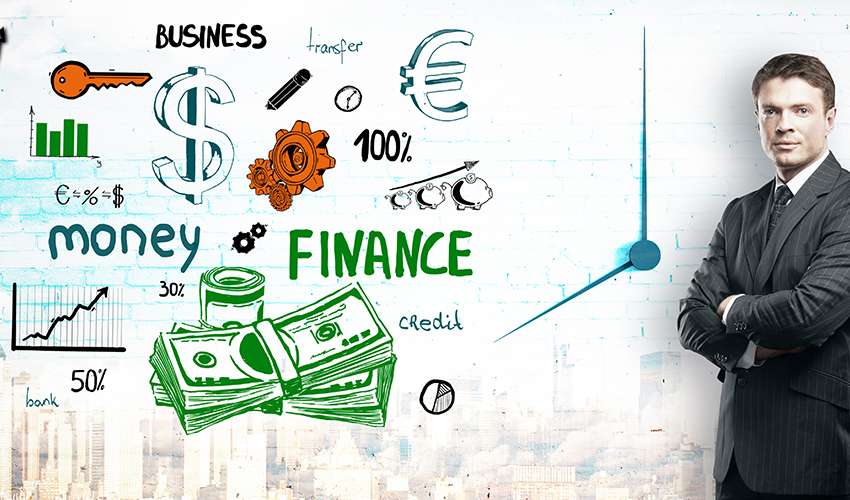ETFs stands for Exchange-traded funds are some of the most popular investment vehicles for all types of investors. These popular funds offer the best of both worlds- providing the diversification of mutual funds while imitating the ease of stock trading. They are a popular choice for investors who are looking to diversify their portfolios without any extra effort.
However, many investors have been asking ‘Are ETFs a good investment?’ and the answer is it depends. If you are looking to diversify or get some tax deductibles, ETFs are a great option for you. But like every financial instrument, ETFs are not a ‘one-size-fits-all’ solution.
ETFs represent ownership in a bundle of stocks or bonds. The value of an ETF can be appreciated if the underlying assets appreciate in value. Moreover, investments that have a steady cash flow like interests or dividends are automatically reinvested into the fund. While everything seems good at first glance, there are some ETF concerns that American investors shouldn’t overlook.
In this blog, we will highlight the top 10 ETF concerns often overlooked by investors and how you can tackle them.
Top 10 ETF Risks You Should Know About
Here are some of the most common ETF concerns that every investor should keep in check.
Commission and Expenses
Many investors ask ‘Are ETFs safer than stocks?’ The answer is that ETFs trade just like stocks. An ETF invests in a portfolio of different companies, usually linked by a theme or sector. Investors simply buy the ETF and get the advantage of investing in a large portfolio at once.
The stock-like nature of ETFs allows investors to buy and sell during market hours as well as enter advanced orders on purchases like limits and stops. In contrast, mutual fund purchases are made after the market closes, after the net asset value of the fund is determined. Much like buying stocks, you will have to pay a commission when buying or selling ETFs. Depending on how often you trade, the trading fee of ETFs can quickly snowball and reduce your investment’s performance.
On the other hand, no-load mutual funds can be sold without a commission or sales charge, making them more beneficial than ETFs(in this regard). When deciding between a mutual fund and an ETF, make sure to identify the fee structure of both options, including the trading fee that is generated inside actively managed ETFs. It is also crucial to remember that actively trading ETFs can reduce the performance of your investment as commissions quickly pile up.
Besides commission, every ETF comes with an expense ratio. It is a measure of what percentage of a fund’s total assets are required to cover various operating expenses each year. While this can’t be recognized as a fee paid by the investor, its effects are somewhat similar. The higher the expense ratio, the lower your total returns will be.
Note: Generally, ETFs have very low expense ratios relative to many investment vehicles. However, they are still a major factor to consider.
Fluctuations and Risks
Much like mutual funds, ETFs are often praised for their diversifying capabilities. However, one thing most investors overlook is that just because an ETF contains more than underlying security, it doesn’t mean it is immune to volatility. The potential for volatility is largely dependent on the scope and type of the fund.
While ETFs that track a broad market like the S&P 500 are relatively less volatile, ETFs that track a specific industry or sector like oil services ETF are highly volatile. This is why it is important to be aware of the fund’s scope and nature along with what types of investment it includes. As ETFs have grown more and more specific with the popularization of the industry, this has become an ETF risk you should know about.
In the case of international ETFs, the fundamentals of a country that the ETF follows are also important, as is the creditworthiness of the currency in the country. Moreover, economic and social instability also plays a key role in determining the success of any ETF that invests in a specific country or region.
It is essential to learn what the ETF is tracking and understand the risks associated with it. Just because a particular ETF offers low volatility, doesn’t mean they all do.
Low Liquidity
Are ETFs a good investment? This question has been lingering in investors’ minds for years. And there is no right answer. A major factor in trading an ETF, stock, or anything that is traded publicly is liquidity. It means that when you purchase something, there is enough trading interest that you will be able to get out of it relatively quickly without price fluctuations.
If an ETF is traded thinly, there can be major problems getting out of that particular investment, depending on your position relative to the average trading volume. One of the biggest signs of illiquid investments is a major spread between the bid and the ask. It is important to make sure that an ETF is liquid before investing in it. One of the best ways to do that is to study the spreads and the market movements over a week or month.
Make sure to check whether the ETF you are buying has large spreads between the bid and ask prices. The tighter the spread, the greater the liquidity, which means less risk in entering and exiting your investments.
Capital Gains Distributions
In some cases, the ETF will distribute capital gains to investors. However, this is not always beneficial for investors as they are now liable to pay the capital gains tax. It is usually better if the ETF retains the capital gains and reinvests them instead of distributing them and creating an unnecessary tax liability for the shareholders.
Even after the distribution of the capital gains, most investors will likely reinvest it. To do that, they will be required to go back to their brokers and buy more shares, which in turn will create more fees.
As different ETFs treat capital gains distribution differently, it can be a challenge for shareholders to stay apprised of the funds in which they invest. It is also very important to learn how an ETF treats capital gain distribution before investing your money.
Lump Sum vs. Dollar Cost Averaging
There are various ways of investing in ETFs, namely Lump-sum and Dollar Cost averaging. Lump sum investing means that you can put your entire investment and get it started right away. This is especially beneficial in a rising market but not suitable if the market seems like peaking or is unusually volatile.
Dollar-cost averaging allows the investor to spread their investment across monthly investments. This strategy is suitable if the market is declining or is fluctuating. However, there is an opportunity cost if the market rises and only a portion of your money is invested. Moreover, even small commissions can snowball over multiple buy orders, making it an expensive choice for the investor.
Suppose you have $5000 or $10,000 to invest in an ETF(like the SPDR S&P 500 or SPY) but are not sure which strategy to choose. Because of the rapid increase of no-fee ETFs in recent years, broker commissions are no longer as important as they once were.
Leveraged ETFs
If you are wondering if are ETFs safer than stocks, many investors opt for investing in ETFs as they feel they are relatively less risky than other investment vehicles. By now, you must be familiar with the volatility risks associated with ETFs. However, there are also certain classes of ETFs that are considered riskier investments than others.
One of the best examples is Leveraged ETFs. These types of ETFs tend to experience depreciation in value as time goes on and due to daily resets. This can happen even if an underlying index is doing well. Most financial experts will warn you against buying Leveraged ETFs. However, if you do buy one, it is crucial to watch your investments and understand the risks associated with it.
ETFs vs. ETNs
Due to their similarity, ETFs and exchange-traded notes(ETNs) are often confused with one another. However, they are actually two very distinct investment vehicles. Much like ETFs, ETNs also employ strategies, track an underlying index of stocks or commodities, and charge fees, among other things.
However, ETNs tend to have a different set of risks from ETFs. ETNs face the risk of solvency of the issuing company. If an issuing bank of an ETN defaults or bankrupt, the investors suffer huge financial losses. It’s a different type of risk than those associated with ETFs, but investors who are eager to invest in ETFs should be aware of it.
Reduced Taxable Income Flexibility
An investor who buys a pool of various individual stocks often has more flexibility than someone who buys the same group of stocks in an ETF. This is a drawback on the part of the investor as it affects their ability to control tax-loss harvesting. If the price of an ETF or stock goes down, the investor can sell the shares at a loss, thereby reducing capital gains and the amount of taxable income to a certain extent.
Investors holding the same group of stocks often don’t have this luxury as the ETF determines when to adjust the portfolio and the investor has to sell a bundle of stocks, instead of individual names.
ETF Premium to Underlying Value
Similar to stocks, the price of an ETF can vary from its underlying value. In this case, the situation arises where the investor actually has to pay a premium above the cost of the stocks in the ETF portfolio to buy that particular ETF.
Although it is quite uncommon and is usually resolved over time, it’s still a potential risk that should be addressed by the investors. Make sure to check an ETF’s disparity against its net asset value for irregularities. If it is constantly being traded differently from its NAV, there might be something going on.
Control Issues
The primary reason why many investors gravitate towards ETFs can also be seen as a limitation. Investors usually have a lack of control when trading ETFs. They don’t have any say in the individual stocks in an ETF’s underlying index. This means that if you are trying to avoid a particular company or industry for any reason, you practically have no level of control as compared to an investor focused on individual stocks.
While an ETF investor does not have to conduct research and select individual stocks that make up the portfolio, they also cannot exclude stocks without eliminating their investment in the entire ETF.
Read Also:- How Does Inflation Affect Stocks?
How to Invest in ETFs?
While there are various ways to invest in ETFs, how you do so ultimately comes down to you. For seasoned investors, investing in ETFs is child’s play. They are standard offerings among online brokers, though the number of offerings and brokerage fees may differ by broker.
Here is how you can easily invest in ETFs in 4 simple steps-
Open a Brokerage Account
If you want to invest in ETFs on your own, the first step is to open a brokerage account. These accounts are where your investments live. That being said, just because you have a brokerage account doesn’t mean you are invested in anything. After opening the account you can invest in ETFs from there. If you need any extra consultancy, you can work with a financial advisor or even consider a robo-advisor.
Find the ETFs You Want to Invest In
While this may seem fairly easy, it can be quite complicated to pick the right ones and narrow down your choices. You can use online screeners to help you find ETFs with low costs, funds in a specific sector or industry, or ETFs that are especially focused on society and the environment.
Buy the ETF
Using your brokerage account’s trading function, locate the particular ETF that you are interested in and place the trade. Make sure to double-check your order before making payments.
Hold the ETF
How long should you hold ETFs? It is a recurring question among investors. Ultimately, it depends on your investment strategy. If you are investing for retirement, the longer you hold it the better. Because of the nature of compound interest, the longer you hold it, the longer the ETF will accrue interest. You can use an investment calculator to determine how much you can earn over different holding periods.
Moreover, if you have a long investment timeline, you will also be able to weather out the highs and lows of the stock market as it can get quite volatile at times.
Read Also:- A Comprehensive Guide on Options Contracts
Things to Consider While Investing in ETFs
There are a wide range of ETFs in the market, which can essentially make it harder to identify the one best suited to you. Here are some of the factors you should consider before investing.
Past Performance
One of the most important factors to consider is the past performance of the ETF. Make sure to check the historical performance of the funds and compare it with their counterparts. Although it doesn’t guarantee future performance, it will give you a general idea about the highs and lows of the funds.
Trading Volume
Another factor to consider is the trading volume of the fund. It displays the number of times the ETFs were traded on the exchange, which is an indication of its popularity among investors. Higher trading volume also indicates better liquidity.
Expense Ratio
The expense ratio of the fund is also an important factor to consider when investing. It is the percentage that indicates the amount you have to pay the AMC for managing your funds. While ETFs are passively managed funds, meaning they have a relatively lower expense ratio, you should always consider this factor when picking an ETF. Ideally, it is advised to select a fund with a low expense ratio.
Tracking Error
As ETFs track the performance of the underlying index, there may be a difference between the ETF’s return and the index’s return. This is known as the tracking error. If the ETF has a lower tracking error, it means that the fund’s return is close to the index’s return. A lower tracking error is considered more favourable by investors.
Final Words
These are the top 10 ETF concerns that every investor should keep in check. Now that you are familiar with the risks associated with ETFs, you can make better investment decisions. In recent years, ETFs have skyrocketed in popularity and it is well deserved. However, like every other investment vehicle, ETFs also come with some drawbacks. Making better investment decisions requires knowing all the facts about the investment vehicle and ETFs are no exception.
Knowing the potential risks associated with ETFs will help you avoid potential pitfalls and if everything goes well, even substantial profits.
Read Also:- Different Types of Stocks to Invest in: You Should Know
Frequently Asked Questions(FAQs)
Ans. ETFs are a bundle of stocks or commodities. Although this means they are highly diversified, there are some types of ETFs that invest in risky sectors or employ high-risk strategies like leveraged ETFs. A leveraged ETF that tracks commodity prices may be more volatile and riskier than a standard stock.
Ans. There are a plethora of benefits to investing in ETFs. Some of the most common ones include-
Can easily be bought and sold
Can be bought and sold anytime during market hours
No separate form-filling
Can put limit orders
The minimum investment is one unit
Flexibility of a stock with diversification of an index fund
Lower expense ratio
Provides arbitrage between future and cash markets
Ans. While there is not a specific holding period for maximum gains, experts suggest the longer you hold an ETF, the better your returns will be. It also ultimately comes down to your preference. If you are investing for retirement, it will be suitable to hold onto ETFs for as long as you can. Compound interest grows over time and the longer you hold it, the higher the accrued interest will be. Moreover, with a long investment timeline, you can also ride the lows and highs of the stock market.







